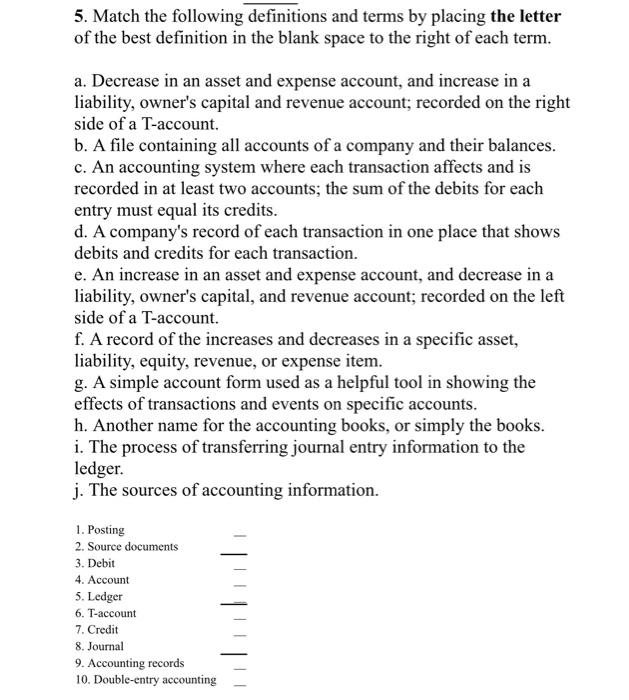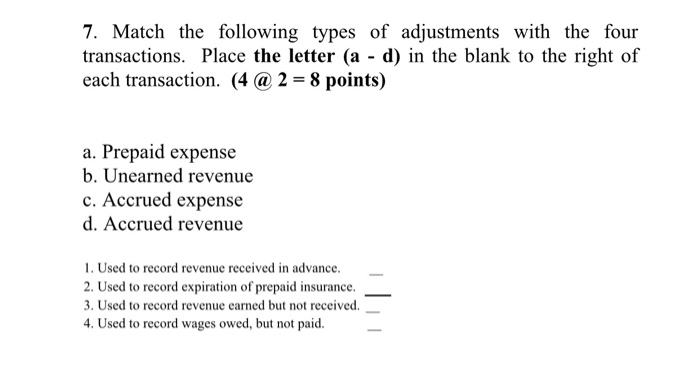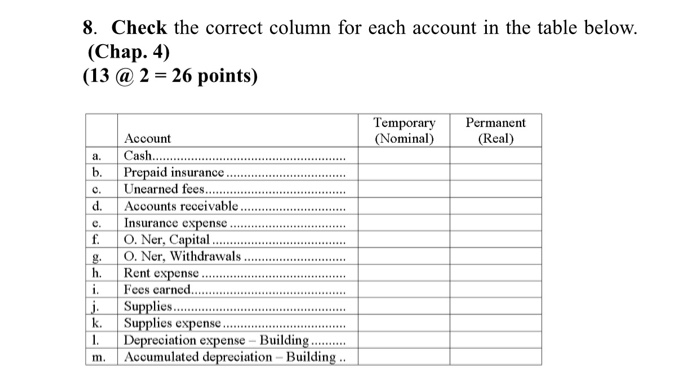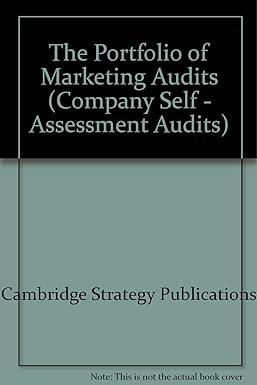5. Match the following definitions and terms by placing the letter of the best definition in the blank space to the right of each term. a. Decrease in an asset and expense account, and increase in a liability, owner's capital and revenue account; recorded on the right side of a T-account. b. A file containing all accounts of a company and their balances. c. An accounting system where each transaction affects and is recorded in at least two accounts; the sum of the debits for each entry must equal its credits. d. A company's record of each transaction in one place that shows debits and credits for each transaction. e. An increase in an asset and expense account, and decrease in a liability, owner's capital, and revenue account; recorded on the left side of a T-account. f. A record of the increases and decreases in a specific asset, liability, equity, revenue, or expense item. g. A simple account form used as a helpful tool in showing the effects of transactions and events on specific accounts. h. Another name for the accounting books, or simply the books. i. The process of transferring journal entry information to the ledger. j. The sources of accounting information. 1. Posting 2. Source documents 3. Debit 4. Account 5. Ledger 6. T-account 7. Credit 8. Journal 9. Accounting records 10. Double-entry accounting 7. Match the following types of adjustments with the four transactions. Place the letter (a - d) in the blank to the right of each transaction. (4 @ 2 = 8 points) a. Prepaid expense b. Unearned revenue c. Accrued expense d. Accrued revenue 1. Used to record revenue received in advance. 2. Used to record expiration of prepaid insurance. 3. Used to record revenue earned but not received. 4. Used to record wages owed, but not paid. 8. Check the correct column for each account in the table below. (Chap 4) (13 @ 2 = 26 points) Temporary (Nominal) Permanent (Real) a. O. Account Cash......................... Prepaid insurance ................. Unearned fees...................... Accounts receivable. Insurance expense ........... O. Ner, Capital O. Ner, Withdrawals Rent expense...... Fees carned....... Supplies................ Supplies expense........... Depreciation expense - Building.......... Accumulated depreciation - Building .. k. m









